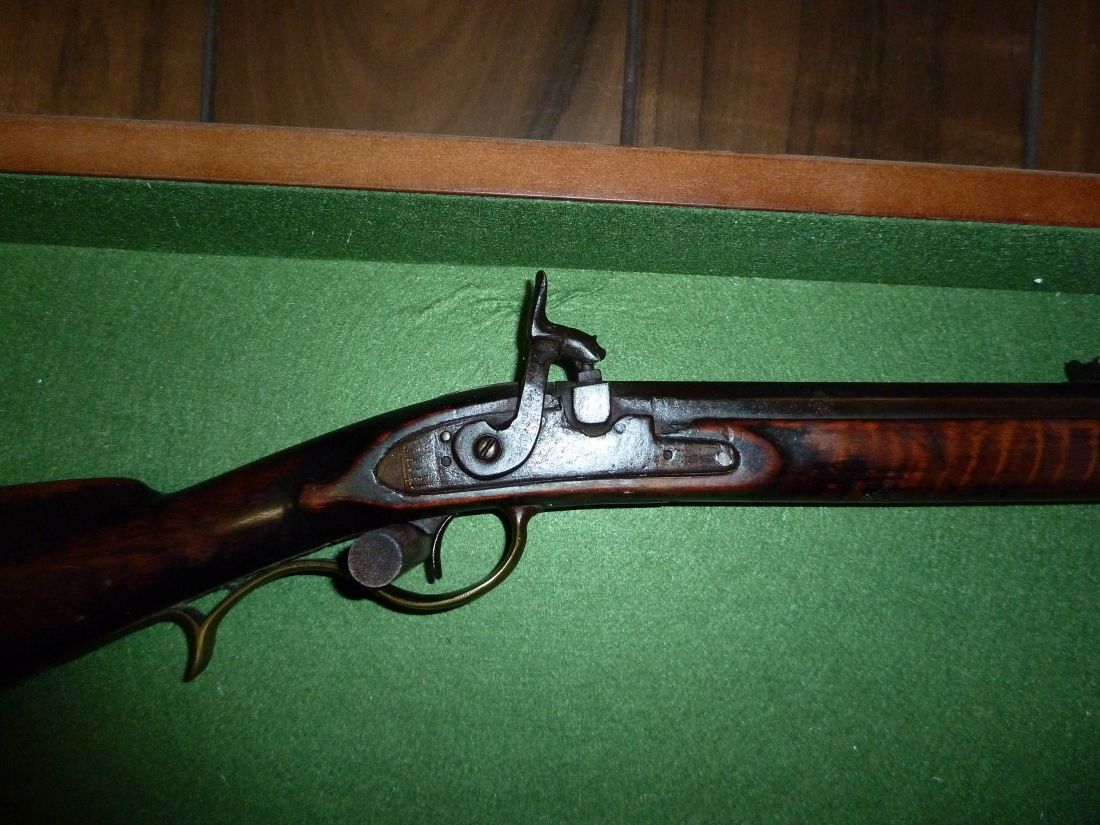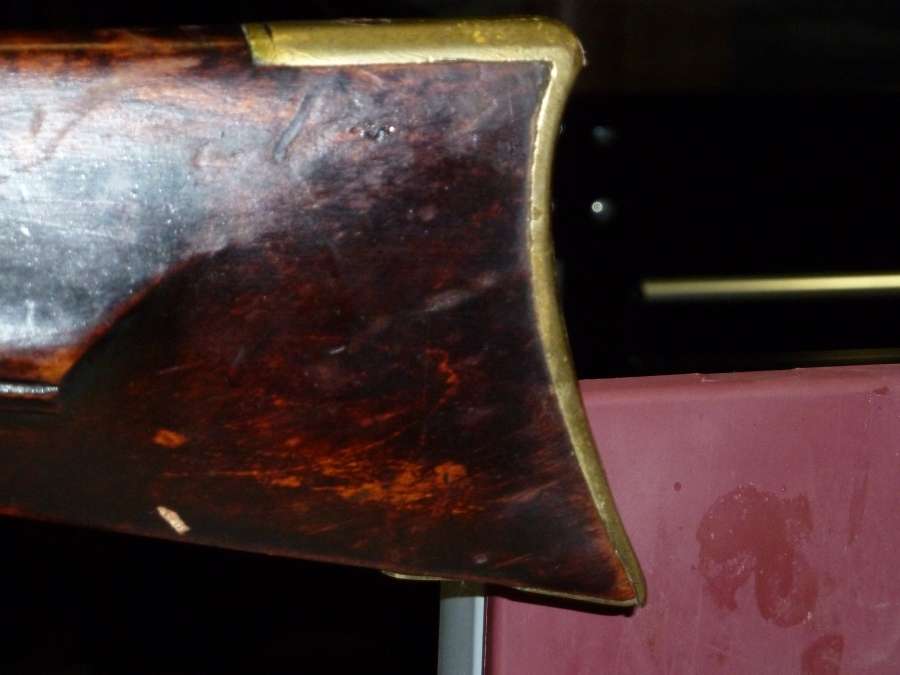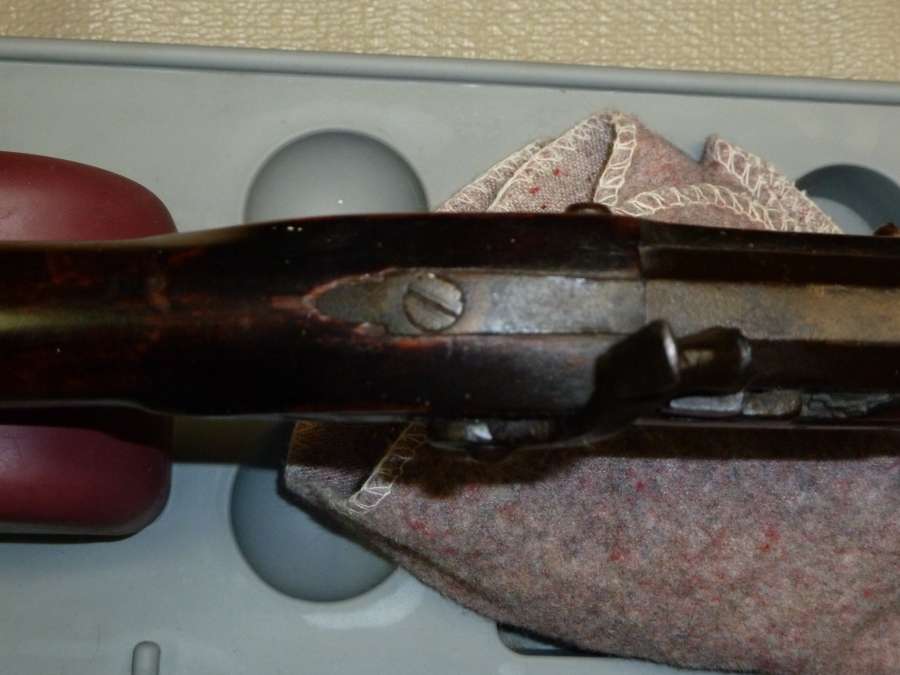I have a long rifle that I have tried to identify using several books like that by Dillin and another by Kauffman.
The rifle has obviously been converted from flintlock to percussion. I was told that the stock was "lightly" refinished along the way. There is no name I can identify on any component.
Here are some photos:








Thank you,
Ron
The rifle has obviously been converted from flintlock to percussion. I was told that the stock was "lightly" refinished along the way. There is no name I can identify on any component.
Here are some photos:








Thank you,
Ron
























